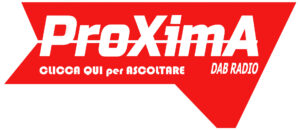Contents
Some order types are better suited for use around news events; some are more suitable to use when you hold positions open over the weekend. They are executed as market orders when they are activated and are therefore IOC by default but can also be set to FOK Famous traders on Xena Exchange. Experienced traders can use a combination of stop-loss and limit orders with a certain percentage range to ensure guaranteed stops. This one doesn’t need much explaining if you read the section above on trading after hours and day trading.
Any negative slippage on a limit or limit entry order is an error and clients are eligible to receive trade adjustments in the event that these errors occur. A market order is a request to buy or sell an asset at the current market price. Note that if the quantity of a market order is too big, it may not be executed at the best price, as it will be matched against several limit orders in the order book. The resulting execution price is the weighted average of the limit orders that have been executed. In managing slippage, it is important to acknowledge that coin markets exhibit volatility. Sometimes, it is impossible to entirely avoid slippage between enter and exit positions.
For this reason, one of the main ways to avoid the pitfalls that come with slippage is to make use of limit orders instead. This is because a limit order will only be filled at your desired price. At AvaTrade, limit orders are filled at set prices or better ones, thus eliminating the risk of negative slippage which can arise when using market orders. If you’re placing a long trade, the ask price might increase before your trade is executed. This means you pay more for the asset – negative slippage occurs. The more volatile a stock is, the more likely you will have some slippage.

Slippage occurs in all market venues, including equities, bonds, currencies, and futures. Gordon Scott has been an active investor and technical analyst of securities, futures, forex, and penny stocks for 20+ years. He is a member of the Investopedia Financial Review Board and the co-author of Investing to Win. Slippage for sell orders is computed using a similar calculation using the distance between the order price and the low of the day. The distance between the high price and the order price is multiplied by the slippage factor. In this example, the difference between the high price and the order price is 20 points.
Get Started With A Broker
In addition, common pain points that the vast majority of altcoins suffer from such as low volume and liquidity may also contribute to slippage. Forex slippage occurs when a market order is executed or a stop loss closes the position at a different rate than set in the order. Slippage is more likely to occur in the forex market when volatility is high, perhaps due to news events, or during times when the currency pair is trading outside peak market hours.
But when you buy an illiquid stock, you are at the market’s mercy. Let’s say you place an order for 100 shares of ABC which is thinly traded. When you place your order, assume there doesn’t happen to be any sell orders at the same price that last person traded. There are a few reasons to explain why there will almost always be a discrepancy between the quote and the actual price. First, if you are buying or selling a very widely held stock or ETF, there could be thousands of trades that are executed every hour.

Slippage can be classified as positive slippage or negative slippage, depending on whether the difference is favorable or not. In a buy order for a stock, positive slippage occurs when the ask rate drops and you purchase it at a lower rate. Similarly, had the ask rate had increased, it would have been a case of negative slippage. While placing a market order, the slippage can be both positive or negative. However, in the case of limit orders, you can prevent negative slippage by locking in a price so that the trade executes at this price or a more favorable one. In the forex market, liquidity is always high during certain trading hours, such as the London Open, New York Open, as well as when these two major markets overlap.
What Is Slippage Tolerance?
But to help you become a better investor, we have to go deeper than a simple definition. We’ll discuss what causes slippage, why it matters, and how to avoid it. We’ll also see that some methods of preventing slippage can have risks of their own. How to use Uniswap Note both the Slippage Tolerance and the Price Impact settings.
You can protect yourself from slippage by placing limit orders and avoiding market orders. Slippage happens during high periods of volatility, such as during breaking news or economic data releases. The difference between the expected fill price and the actual fill price is the “slippage”. Use our Crypto Market Snapshot tool to quickly see what’s happening in the crypto market today. Let’s look at a couple of spread betting examples of slippage, using different order types.
- If you try to trade on low-liquidity markets, you might find yourself waiting for hours or even days until another trader matches your order.
- In a buy order for a stock, positive slippage occurs when the ask rate drops and you purchase it at a lower rate.
- In this case, front running happens when another trader sets a higher gas fee than you to purchase the asset first.
- While it’s half of what we saw with BIFI, when we compare them in percentage terms, Bitcoin’s bid-ask spread is only 0.0083%.
- If a reason for repeated misses in order price is found—for example, a threshold of message volume or other liquidity indicator—then backtesting can trial variations to the strategy.
It was designed this way because a stop order is most frequently used to exit a trade from a losing position. A stop order provides execution certainty but it does not provide price certainty, so negative slippage is possible. Slippage in trading is when an order is filled at a different price forex slippage than the one expected. It tends to have a negative connotation, but slippage can also be favourable, resulting in getting a better-than-expected price. Slippage can occur when spread betting or trading contracts for differences on a range of financial markets, such as stocks or forex.
Reducing Order Slippage While Trading
A limit sell order allows you to specify a certain price to make a precise exit from the market. For the crypto market, you can set a specific price for your trade to get filled at in order to match orders with your position at the price you want. For instance, if a large order is placed when there is insufficient buying interest in an asset to maintain the expected trade price, slippage can occur. For strategies in production, backtesting is also valuable when a slippage issue is exposed. If a reason for repeated misses in order price is found—for example, a threshold of message volume or other liquidity indicator—then backtesting can trial variations to the strategy. Managing slippage with backtesting can be done with trading strategies both in development and in production.
With slippage, the market participant gets a different execution price, in either direction, from the intended price. Although they can occur anytime, slippages are most prevalent during periods of heightened market volatility, marked by a surge in market orders. But what if there was breaking news that apples cure COVID-19 and the price skyrocketed to $100/apple? When trading crypto, the volatility in asset price can create such a situation where the executed price is different from the quoted and expected price.
With Slippage Tolerance, you can set the maximum % of price movement you can live with. The default for Uniswap is 0.5%, but you can set it to any % you want. A single mistake could spell the difference between winning and losing a trade, so it’s important that you develop the habit of carefully entering your trade orders. If your broker can’t execute your order immediately, there can be a significant price variation, even if only a couple of seconds have passed. This frequently happens if the market is moving quickly, like during important economic data releases or central bank press conferences.

Forex slippage takes place when a market order executes or the stop-loss closes the position at a different rate from when the trader set the order. Slippage is more likely in a forex market when volatility is high because of news events that turn the markets or when a currency pair trades outside peak market hours. In both scenarios, reputable forex dealers execute the trade at the next best price. More liquid currency pairs are less prone to slippage, although this changes with market volatility. In stock trading, slippage comes about as a result of a change in spreads. Spreads in trading simply refer to the difference between the ask and bid prices of an asset.
It is what happens when you get a different price from what you expected on an entry or exit from a trade. Some exchanges allow you to set a slippage tolerance level manually to limit any slippage you might experience. You’ll see this option in automated market makers like PancakeSwap on Binance Smart Chain and Ethereum’s Uniswap.
Reverse Slippage
The alternative is to use a limit order, which only goes through if the price is the one you want, or better. If the market price slips to a worse price than the one you specify, the order doesn’t happen. The price may only shift by a couple of pence per share, but if you’re buying 500 shares in one trade, this can make a big difference.
Once You Get A Price Quote, Why Is There A Difference Between That Quote And The Actual Executed Price?
Slippage refers to all situations in which a market participant receives a different trade execution price than intended. The amount of slippage you set can have a knock-on effect on the time it takes your order to clear. If you set the slippage low, your order may take a long time to fill or not fill at all. If you set it too high, another trader or bot may see your pending order and front-run you. The option shows a graphical representation of an asset’s order book.
Saddle Raises $7 5m To Reduce Slippage In Defi Trading
As the price rises or falls, it triggers stop-losses and limit orders, which adds to the momentum of the price. Anyone placing a market order opens themselves to slippage at whatever the current price is when the order executes, whether it’s trending up or down. For this reason, it’s best to avoid market orders during periods of high volatility. Since slippage is the movement that occurs between entry and exit trading positions, the main way to manage risk is to use limit orders. Limit orders, instead of regular market orders, prevent traders from executing a trade at a worse price than intended. Traders sometimes use market orders to enter and exit positions in times of high volatility.
The longer you hold a position, the more chance of slippage there is. You should also avoid trading when major news stories are breaking that could affect the price of the asset you have in mind. When you buy and sell assets on a crypto exchange, the market prices are directly related to supply and demand. Apart from the price, other important factors to consider are trading volume, market liquidity, and order types. Depending on the market conditions and the order types you use, you won’t always get the price you want for a trade.
Traders who focus on the probability of the execution should set larger slippage values. However, there is no absolute rule, and selecting the appropriate slippage value ex-ante is a challenging task. Any slippage value sets in fact a limit Venture capital for the market order, where the limit is the price on which the trader clicks, or the market price at the time the order is sent. Consider a trader who has sold a call option on an illiquid asset and has not covered his position.
Let’s Open An Account And Trade With Us!
They calculate the liquidity cost as the difference between the execution price and the initial execution price. Market impact, liquidity, and frictional costs may also contribute. You could also trade stocks and futures while the major U.S. markets are open (if trading in the U.S.). Another idea is to trade forex when London and/or the U.S. are open, as that tends to be the most liquid and active time for most currency pairs. Slippage also tends to occur in markets that are thinly traded.
As a result, you will have to take the following orders (above $100) until your order is filled entirely. This will cause the average price of your purchase to be higher than $100, and that’s what we call slippage. For example, a market maker may simultaneously offer to purchase BNB for $350 per coin and sell BNB for $351, creating a $1 spread. Anyone who wants to trade instantly in the market will have to meet their positions.
On the other hand, there are steps you can take to reduce its impact on your profits, and in some cases avoid it altogether, though doing that generally comes at a price. Slippage usually occurs in periods when the market is highly volatile, or the market liquidity is low. Since the participants are fewer in markets with low liquidity, there is a wide time gap between the placement and execution of an order. The volatile markets experience quick price movements, even quicker than filling an order. Hence, the price of an asset may change during the time gap, which results in slippage.
Author: Oscar Gonzalez










